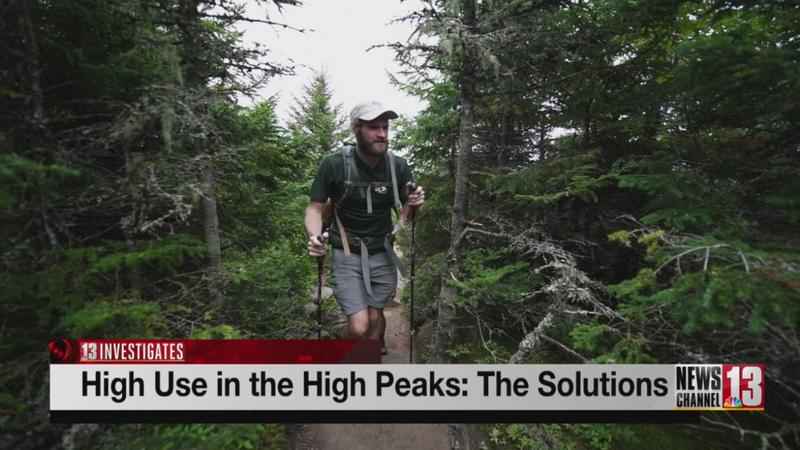High Use in the High Peaks Part III: Permits
This is Part III of our NewsChannel 13 Investigates story High Use in the High Peaks. Click here for Part I, where we look at the problems. Click here for Part II, where we look at other possible solutions.
KEENE — The draw of the High Peaks seems to be even stronger nowadays. There are so many hikers, many are asking, is it time to talk about permits?
“It’s not an easy conversation to have. It’s just time to start having the conversation,” said Raul "Rocci" Aguirre, Deputy Director and Director of Conservation for the Adirondack Council.
It’s a touchy subject.

Some groups like the Adirondack Council say it’s time to start considering some way to limit hikers at busy trailheads, in order to protect the land from further damage.
“I wouldn’t even say there’s a fixed idea. I think there’s an idea you have to do it right from the beginning,” said Aguirre.
“We are not afraid of taking a hard look at permits. Mount Katahdin has had permits for 50 years,” said Peter Bauer, executive director of Protect the Adirondacks.
Bauer wants to look at permits for a few of the most popular High Peaks trails at certain times.
“In our society, we handle permits all the time. We do it when we go out to dinner. We do it when we go out to the movies,” said Bauer. “…If you look at it as simply restricting use, we don’t think that’s the whole picture and the complete picture. It guarantees people that they’re able to pursue the opportunity and the hike they want to do.”
Joe Pete Wilson is the town supervisor in Keene, right in the heart of the High Peaks. Wilson has dealt with illegally parked vehicles and hikers turning backyards into bathrooms. He has seen the impact first hand, and here’s what he thinks.
“Permits would be like just slapping a big Band Aid on the High Peaks. It’s not addressing the fundamental things. Without the front country infrastructure, the staffing, the information hubs, how are you going to do a permit system anyway?” said Wilson.
And then there’s the DEC. In large part, it comes down to them.
“All the things we just talked about: shuttle service, parking lots, education, better trails, better trailheads. Those are the things that need to be addressed before we get to the very complicated and cumbersome permit system,” said Basil Seggos, DEC Commissioner.
All the groups talk about a bigger plan including the aforementioned improvements. It’s just where permits fall in that plan.
Seggos says he has the will of the governor to get all the things he mentioned done. So, when does it get done?
“Well, everything comes down to money,” said Seggos.
It’s not just the DEC, the state has been talking about financial help from the federal government to help make up for lost revenue from the pandemic.
“If we aren’t going to get this federal support. I don’t see how we undertake, as a state, so many of the important initiatives we need to do.”
So the trash, the toilet paper, the erosion, the rare alpine vegetation. Until changes happen, and really even after they do, it all comes down to you, and how you treat the wilderness.
For tips on how to hike responsibly, see this information on Leave No Trace.
For the 10 Essential Items every hiker needs in his or her backpack, click here.
For more information on the positions of each of these groups and the idea of permits, see below:
Click here for our full interview with DEC Commissioner Basil Seggos.
This is Part III of our NewsChannel13 Investigates story High Use in the High Peaks. Click here for Part I, where we look at the problems. Click here for Part II, where we look at other possible solutions.